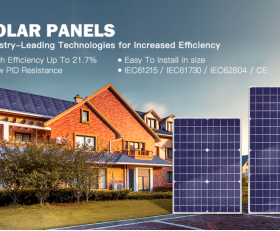Best Solar + Storage System Configurations: A Comprehensive Guide for Households
As the world continues to focus on sustainable energy solutions, solar power and energy storage systems have become essential for modern households. Integrating these technologies can significantly reduce energy costs, lower carbon emissions, and ensure a stable power supply. However, configuring a solar + storage system effectively requires careful consideration of various factors. This guide explores the optimal configurations for household solar and storage systems, ensuring maximum efficiency and cost-effectiveness.
1. Solar Panel Orientation and Tilt
The orientation and tilt of solar panels play a crucial role in maximizing energy production. Properly installed panels face the sun throughout the day, capturing sunlight optimally. In most regions, solar panels should be tilted at an angle between 25° and 45° relative to the ground. This tilt angle is optimal for most household setups and ensures consistent energy generation. Additionally, panels should be mounted on a stable surface, such as a roof or wall, to prevent movement and damage.
2. Choosing the Right Battery Type
Energy storage systems are a vital component of a solar + storage setup. The type of battery selected can significantly impact system performance and longevity. Lithium-ion (Li-ion) batteries are the most widely used option due to their high energy density, fast charging capabilities, and reliability. However, for durability in outdoor conditions, lead-acid (Pb) batteries are a better choice. Modern Li-ion batteries, on the other, hand, are more robust and suitable for household use. It’s essential to choose a battery that matches the energy needs of the system.
3. Calculating System Capacity
Determining the appropriate capacity of the solar + storage system is critical. The system must generate enough energy to meet daily household needs, including lighting, appliances, and backup power during cloudy days or power outages. A good rule of thumb is to ensure that the total energy storage capacity is at least 10% higher than the average daily energy consumption. This buffer helps prevent interruptions and ensures a smooth transition between solar generation and storage.
4. Strategic Storage Location
The location of the energy storage system is another important factor. For households with solar panels on a roof, the storage battery should be installed separately to avoid complications. Alternatively, placing the storage system outside ensures it is accessible and not affected by weather conditions. A well-ventilated, dry location is recommended to prolong battery life and prevent corrosion.
5. Monitoring and Maintenance
Effective monitoring and regular maintenance are essential for the longevity of a solar + storage system. By tracking energy production and consumption, homeowners can optimize their system performance. Regular checks on the electrical components, including the inverter and charge controller, help ensure smooth operation. Additionally, replacing old or degraded batteries and upgrading components as needed can extend the system’s lifespan and efficiency.
6. Balancing Solar and Storage
A balanced approach to configuring solar and storage systems ensures reliability and sustainability. While solar panels generate energy during peak sunlight hours, storage systems provide backup power during periods of low or no solar generation, such as nighttime or cloudy days. This balance is crucial for maintaining a consistent power supply and preventing energy bills from rising due to load spikes.
Selecting the best configuration for a solar + storage system requires careful planning and consideration of various factors, including panel orientation, battery type, system capacity, and storage location. By optimizing these elements, households can create an efficient and reliable energy system that reduces their carbon footprint and lowers energy costs. With proper monitoring and maintenance, such systems can provide long-term savings and a secure power supply. Investing in a well-configured solar + storage system is an excellent step toward a more sustainable and energy-independent future.

